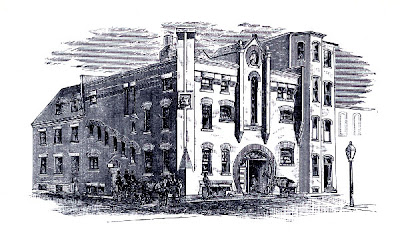Posted May 29, 2012
By Donald F. Smith, DVM, Cornell University
Graduation ceremonies for the 28 U.S. veterinary colleges are conferring DVM degrees on 2,630 new veterinarians this spring. Hundreds more U.S. citizens will be graduating from the schools in the Caribbean (especially Ross and St. George's Universities), and from other foreign schools.
What will these new veterinary graduates be doing and who will employ them?
To get an answer, I looked at data from the American Veterinary Medical Association for the graduates who entered the job market in 2009. Data from the more recent classes are not as reliable as a substantial proportion of the veterinarians do not yet have complete records on file. The following summaries do not include the relatively small proportion of graduates who are not members of the professional association.
Species Activity:
Approximately 80% of veterinarians who graduated in 2009 work with small animals (see chart below - SmAn). The predominant species are dogs and cats, but increasing numbers of pet birds, rabbits, small rodents and reptiles are now cared for in veterinary clinics.
Eight percent of the graduates are working in exclusive or predominantly equine practices (EQ in chart below). Livestock and food animal practices (FA) and mixed animal practices (MA) make up the remaining 10% of employment activities.
With respect to large animal employment in general, and food animal in particular, there are significant differences in employment activity based upon college of graduation. For example, students interested in bovine practice tend to self-select colleges that emphasize production animal education and these graduates are much more likely to be employed in that field. A similar trend is evident with graduates seeking equine employment, though the data are not as sharply defined as for food animals.
Despite the fact that many veterinary students arrive at college with aspirations to work with wildlife or in zoos, only a small handful realize that goal when they graduate. Thirty members of the Class of 2009 list activities with wildlife or zoologic species, but the majority of these spend only a small proportion of their time working with these animals and the majority of their time with more traditional species.
Who Employs the Veterinarians: Regardless of the species interest, 87% of the recent graduates are in private clinical practice. The 6% working in universities are usually interns, residents, clinical instructors, or graduate students. Another 4% of recent graduates work in non profit organizations, usually humane associations though a few work in zoos and aquariums. Three percent work for the government, mostly in the army or the federal meat inspection service, and one percent work in industry.
What Type of Practice Work Do Veterinarians Do: Of the veterinarians who graduated in 2009 and who are now working in private practice, almost 75% are employed in general medical and surgical practices. See chart below (Md/Sg). These range from single-doctor practices to large practices employing 8-10 or even 25 or more veterinarians. Emergency and critical care veterinarians (E/C), make up 15% of the private practice workforce and are employed in clinics or services within larger clinics that are solely devoted to emergency work and management of critical-care patients. Six percent of the graduates work in production animal medicine, mostly in cattle practices (PM). Five percent work in referral or specialty clinics (R/S).
Dr. Smith invites comments at dfs6@cornell.edu.







